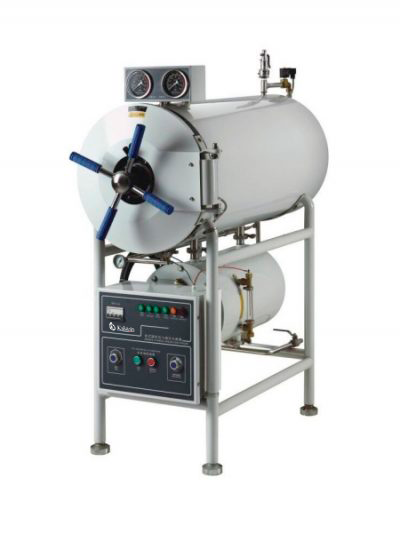In the competitive world of laboratory equipment, two types of autoclaves stand out for their remarkable features: the Horizontal Cylindrical Pressure Steam Autoclave YR05635 // YR05639 from Kalstein and the Autoclave Horizontal Cylindrical 150 Liters from Raypa. Understanding the subtle differences between these products can greatly enhance the decision-making process for institutions aiming to equip their laboratories with the best technology.
The Kalstein autoclave models, YR05635 and YR05639, display a robust design with advanced pressure steam capabilities. These units are engineered to offer superior sterilization with their horizontal cylindrical chambers, optimizing space and efficiency. Kalstein’s models integrate cutting-edge technology and user-friendly interfaces, making them a superior choice for laboratories aiming for precision and reliability.
Conversely, the Raypa Autoclave boasts a similar cylindrical design focused on a 150-liter capacity. Known for its reliable performance, this autoclave is favored for laboratories needing consistent and standardized sterilization processes. Raypa’s brand reputation in the industry lends credibility to its functionality and durability but lacks some of the specialized features present in Kalstein models.
Comparison Table
| Feature | Kalstein YR05635 / YR05639 | Raypa 150 Liters |
|---|---|---|
| Design | Horizontal cylindrical, space-saving | Horizontal cylindrical |
| Capacity | Varies (YR05635/YR05639) | 150 liters |
| Technology | Advanced steam pressure control | Standardized steam control |
| User Interface | Intuitive digital displays | Basic digital controls |
| Price | Competitive, inquire for details | Mid-range |
How They Work
Both autoclaves function by using high-pressure steam to sterilize equipment and laboratory tools. The Kalstein autoclave employs advanced steam pressure technology, ensuring optimum distribution of heat for effective sterilization. Meanwhile, the Raypa model relies on a more traditional steam distribution method, which, though reliable, is less adaptive to the specific needs of varied sterilization tasks.
What They Are Used For
These autoclaves are essential in sterilizing lab equipment, helping to maintain a sterile environment crucial for research and clinical laboratory settings. The Kalstein models are particularly suited for tasks demanding precision and flexibility across different sterilization parameters, while Raypa’s autoclave is ideal for standard laboratory applications where space and budget come into play.
Types
Kalstein offers a range of models under the YR05635 and YR05639 series, providing options that cater to varied laboratory needs, from compact designs to those with enhanced features for extensive laboratory setups. Raypa, on the other hand, focuses on standard models with a consistent capacity output, which primarily suits moderate laboratory requirements.
Market Pricing
The price of these autoclaves varies, with Kalstein’s models offering a competitive edge in pricing, especially when features and capacity are considered. Detailed pricing can be obtained through quotation requests on the Kalstein website, offering flexibility depending on the specification needs. Raypa’s model, generally found in a mid-range price bracket, reflects its focus on well-rounded, standard features suitable for general laboratory use.
FAQs
What is the main difference between Kalstein and Raypa autoclaves?
The primary distinction lies in advanced steam pressure control and user interface. Kalstein models offer enhanced technological features for greater flexibility.
Are these autoclaves energy-efficient?
Yes, both models are designed to be energy-efficient, but Kalstein’s models integrate features aimed at maximizing energy usage for enhanced efficiency.
How long do these autoclaves last?
With proper maintenance, both Kalstein and Raypa autoclaves can offer many years of reliable service.
Advantages and Disadvantages
Kalstein YR05635 / YR05639: Advantages include advanced steam pressure technology, space-efficient design, and user-friendly interface. A potential disadvantage might be the need for initial interface learning.
Raypa 150 Liters: Offers reliable performance and standardized features, with the main downside being less technological flexibility compared to Kalstein models.
Usage in the Field
In practical scenarios, Kalstein autoclaves are favored for high-precision labs that require frequent, rigorous sterilization cycles. Their advanced control systems permit fine-tuning of sterilization protocols, essential for sensitive applications. Raypa autoclaves, suitable for general laboratory settings, provide consistent results, ideal for standard laboratory procedures.
Recommendations
To maximize the utility of these autoclaves, regular maintenance such as cleaning and routine system checks are advised. For Kalstein models, take advantage of the user-interface tutorials to fully utilize its advanced features. Engaging in regular training sessions can also improve operational efficiency.
If you are seeking a blend of innovation and quality, you have come to the right place. At Kalstein, we offer the luxury of exploring our exclusive catalog of laboratory equipment. Each of our instruments is crafted with a level of excellence. Our online purchasing channels are intuitive and efficient, ensuring the most affordable prices. Do not hesitate, we bring science to life; it’s time to be part of our community. https://kalstein.co.in/product/horizontal-cylindrical-pressure-steam-autoclave-yr05635-yr05639/.


